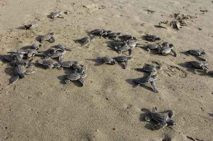Sunday, January 13, 2008
Monday, November 26, 2007
Arnos Vale Water Wheel Restaurant Re-Open


At the Arnos Vale Waterwheel you dine in style and comfort, enjoying the finest meals a local restaurant can offer - one that has been visited and recommended by scores of world travellers.
Many can find nothing but superlatives to describe their gourmet experience at the Waterwheel. Dawn Beaty of Dive Training Magazine, who dined there recently, remarked that it was "the best restaurant food service in all the Caribbean."
The facility consists of a converted sugar factory that now comprises a nature park, historic site, museum, gift shop, theatre, restaurant and bar.
Owned by Bill and Cintra Bronte, the Waterwheel is situated on

The actual wheel, now non-functional, was originally made in Scotland and taken to Tobago in pieces by ship and assembled on site. It is now the largest remaining artifact that has been preserved and according to Phillip Bronte, manager of the restaurant, the Arnos Vale Sugar Factory represents one of the best preserved examples of eighteenth and nineteenth century technology in Tobago.
Guides at the Waterwheel are available to show their visitors such places of interest as the preserves of the Arnos Vale Sugar Factory where archaeological sites have been identified. The remains of the Estate House, called Buckra House, are located on a hilltop offering visitors a spectacular view of the area. The dam that diverted water to the canal runs adjacent to the restaurant. The Slave Village, across the road from the factory, is where budding archaeologists can discover historic pottery.
And if that's not enough, you can visit the Enigmatic Tomb located near the Slave Village or either of the two Amerindian sites that have been located - one downstre
Saturday, November 24, 2007
Arnos Vale Water Wheel, Flowers and Fauna


Trinidad & Tobago together have a mind-blowing range of both flora and fauna. While Trinidad's plant and animal life is not too different from the Venezuelan,
The rare orchid is a specialty of 
Upon arrival at


Friday, November 23, 2007
Arnos Vale Reef Voted Best Reef In Tobago





Tobago’s spectacular underwater world is undoubtedly one of the treasures of this beautiful tropical island, and whether you’re a visitor or a resident in Tobago you should make every effort to experience its amazing variety and colour. The number of species found on coral reefs is estimated to be in excess of one million, making them the second most biodiverse habitat on earth after rainforests.

With over 350 million years of evolution behind them, coral reefs are truly breathtaking monuments to life’s almost infinite variety and complexity. But coral reefs are not just beautiful natural wonders designed to provide people with a relaxing distraction while bobbing around on a boat or with a snorkel. They are a vital part of the ecological fabric and economic activities of small Caribbean islands. They are the backbone of Tobago’s two largest industries; tourism and fishing, providing both jobs and food. They also protect the coastline from erosion by breaking ocean swells. They produce the sand on our beaches. In fact, the whole of South-west Tobago rests on ancient coral limestone deposited over hundreds of thousands of years by the tiny coral polyps that make up coral reefs.Tobago’s fringing coral reefs are some of the best in the region, and because of its nutrient-rich coastal waters, they are also home to an impressive abundance of marine life, ranging from the microscopic to the huge. Located close to the South American Continent, Tobago is washed from the south by the Guyana Current which carries nutrients from the Orinoco River.
 ood web of marine life of all shapes and sizes. Much of it ends up as food for the massive shoals of small fry, which in turn feed large predatory fish, such as jacks, barracuda, wahoo, tarpon and tuna. Other large animals frequently seen are sea turtles, reef sharks, hammerhead sharks, groupers, eagle rays and manta rays. The rich waters are also the reason for the massive size of some of the hard corals - such as the giant brain coral off Speyside which is over 6 meters wide - and the huge barrel sponges that can be seen in the Columbus Passage south of Tobago at Arnos Vale Hotel. This is perhaps why Conservation Cay Foundation signed a two year lease to find out what makes ArnosVale Reef so special.
ood web of marine life of all shapes and sizes. Much of it ends up as food for the massive shoals of small fry, which in turn feed large predatory fish, such as jacks, barracuda, wahoo, tarpon and tuna. Other large animals frequently seen are sea turtles, reef sharks, hammerhead sharks, groupers, eagle rays and manta rays. The rich waters are also the reason for the massive size of some of the hard corals - such as the giant brain coral off Speyside which is over 6 meters wide - and the huge barrel sponges that can be seen in the Columbus Passage south of Tobago at Arnos Vale Hotel. This is perhaps why Conservation Cay Foundation signed a two year lease to find out what makes ArnosVale Reef so special.Nature's Paradise For Bird Watching

Trinidad and Tobago offer some of the best bird-watching in the Caribbean, boasting over 430 recorded species of bird (250 of which actually breed on the islands). Although Trinidad is renowned as a birdwatchers paradise, Tobago is home to around 220 species of bird, including some not regularly seen in Trinidad, such as the Red-Crowned Woodpecker, the White-tailed Sabrewing, the Red-billed Tropic Bird and the turkey-like Chachalaca, which is commonly known as the Cocrico and is also the national bird of Tobago. Keen birders will be interested to learn that there are also a number of sub-species of bird in Tobago that do not occur elsewhere, including the Tobago variants of the Red-legged Honeycreeper and Blue-grey Tanager.
Trinidad and Tobago were originally part of the South American continent. At its closest point, Trinidad is only seven miles from the Venezuelan coast. Consequently, the geology, habitat and bird life of the islands bear greater resemblance to South America than to other Caribbean islands.
The proximity of Trinidad and Tobago to the South American continent make these islands ideal wintering grounds for the many species of birds that migrate north from Argentina and other countries. Similarly, they provide an ideal environment for a variety of northern migratory birds that stay or pass through on their way to wintering grounds in the south. Birdwatchers therefore have the opportunity to see Caribbean and South American birds and, at the right time of year, migrants from North America.
The South American migrant species are most common between May and September, while birds from North America visit between October and March. The dry months, from January to March or April, seem to be the most popular time for bird-watchers to visit. However, during the wet season, birds are often seen snatching at food between the showers, so there is always plenty of action. In common with other tropical regions, the best time for bird-watching is in the early morning, just after sunrise until about 9am; and during the evening in the hour or so before sunset.
Although Tobago is a small island, it offers a great variety of natural habitat for birds including tropical rain forest, mangrove swamp, marshland, open country and scrubland, gardens, parks and coast. Good bird-watching areas are plenty but nothing like sitting on your verranda overlooking the sea.
Many species of smaller bird, such as the yellow and black bananaquit or sugarbird, can be seen at close quarters around the hotels. Attracted by sugar-water feeders, they fly in and cheekily snatch titbits from the tables. Amongst the smaller birds there are six different species of beautiful hummingbirds with colourful iridescent plumage. The most common is the Copper-rumped Hummingbird – iridescent green above and below with coppery bronze on back and white tufts on the thighs. Mot-mots, with their striking plumage of green upperparts, black crowns ringed with bright blue, russet under-parts and blue racquet-tipped tails, usually inhabit the forest undergrowth but some are tame enough to fly in for scraps of food. Blue-grey tanagers, with brilliant violet-blue patches on each of their wings, can also be seen flying around in noisy, restless groups.
In the rainforest it is possible to see many species of local birds such as the Rufous-breasted Hermit, one of the larger varieties of hummingbird. Mainly brown in colour, it can be distinguished by its long, curved bill and the prominent white tips on its tail-feathers. The Pale-vented Pigeon is commonly seen over the Main Ridge forests and the turkey-like Cocrico frequents forest and cultivated land. The distinctive, harsh raucous call of the Cocrico is often to be heard at dawn and dusk throughout Tobago.
One of the most interesting forest birds is the White-bearded Manakin. The male is black on the crown, the upper back, the wings and the tail. He has a grey lower back and is otherwise white. The female is olive-green all over and inconspicuous. Both male and female have orange legs. Some male birds, such as the Manakins, frequently congregate to display themselves to each other and to the females by jumping rapidly from perch to perch beside a prepared ‘court’ – a patch of forest cleared of all vegetation – which he defends. These displays are known as leks.
Around the coasts of Tobago it is possible to see the Magnificent Frigate birds gliding high above the sea searching for fish. With their distinctive long tails occasionally divided into a deep fork, they will often attack and bully the smaller seabirds, snatching the fish from their beaks. Brown pelicans, usually in flocks of about a dozen, dive from great heights into the sea, folding their wings just before they hit the water, and scooping up fish in their enormous pouched bills. Booby birds, further out to sea than the gulls, terns and pelicans, glide low over the water with their long, pointed wings.
Tobago possesses some extremely interesting bird sanctuaries. The Arnos Vale Hotel has 400 acres of beautiful grounds where most of the local bird species can be found, such as the White-lined Tanager, the Yellow Warbler, and the Blue-crowned Mot-Mot. For many years the hotel has fed the birds at 4pm each afternoon, and tea on the terrace at the Arnos Vale is now a well-established and rewarding experience
and tea on the terrace at the Arnos Vale is now a well-established and rewarding experience






